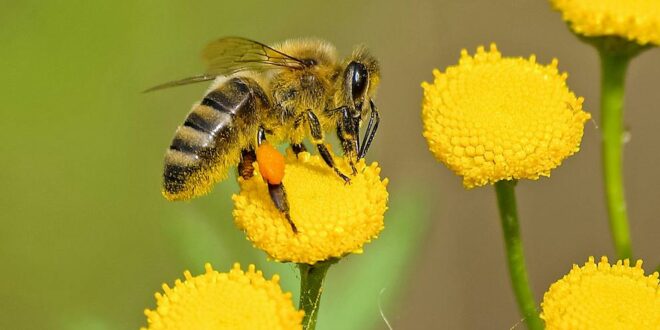You don’t need to be a bee keeper to have ‘golden girls’ visit your backyard garden (or wilderness)! If you want to encourage bees onto your property, and to give these busy, useful insects a helping hand as seasonal temperatures take a dip, the following tips will get you started:
Winter food sources
In the chilliest parts of the country, bees seldom venture from their hives in winter. But in warmer areas, when temperatures reach 10 degrees Celsius and above, bees can be seen out and about, in search of nectar. Plants flowering in winter are fewer in number than those blooming in the warmer months. Growing winter-flowering plants on your property will provide an important food source for bees, while also bringing colour to your garden. When planting winter-flowering shrubs, consider the likes of daphne, viburnum, forsythia, wintersweet, and tagaste. Winter and early-spring flowering perennials and annuals include hellebore, pansy, viola, polyanthus, and primula. Kowhai will flower early in many parts of the country, but may be harmful to bees (the nectar stupefies the bees, and in a sudden cold snap, the insects may not make it back into their hive before nightfall, and consequently they may freeze to death).
So simple
Bees are more able to locate a flower’s nectar if the bloom is not a ‘complicated’ one. ‘Single’ rather than ‘double’ or ‘ruffled’ flowers are the most bee-friendly blooms. Planting bee-favourite flowering plants close together is also helpful for these nectar-gathering insects. It means they have less distance to travel in order to gather nectar, and have a sheltered position in which to do all their collecting in one hit.
Go organic!
Autumn is a traditional time of year to ‘clean up’ our gardens and backyards. For many, this involves the use of herbicide. Unfortunately, nothing could be worse for bees. Bees can come into contact with toxic herbicides, either through ingesting them via nectar or water, or by crawling over residue. They can then carry it back to the hive. It can be challenging to allow your garden to become a little more ‘unkempt’ looking rather than to use herbicides that can harm bees. Some people find it helpful to place an ‘I’m a bee-friendly gardener!’ sign where understanding others will notice it.
Insecticides also spell death to bees. Instead of spraying insecticides onto plants, adopt a low-key soapy-water alternative (always wash this off edibles before consuming), or simply use your fingers to squash visible pests such as aphids (you don’t need to squash the very last one to be successful – balance is the key).
Water
Like all animals, bees require water to survive. But while most animals obtain much of the water they need from the food they eat, the nectar and pollen bees collect isn’t a good source of moisture. Bees actively seek out water in all seasons. They even signal water sources to other bees, and the insects will return again and again to the same spot to collect it. Unfortunately, bees can’t swim, and if a safe source of water isn’t available, they will drown. Help the bees in your backyard (especially in winter when rain can be heavy), by emptying containers which can accumulate water an insect could land in. Instead, provide safe water feeders for bees. These can be purchased from garden centres and bees supply outlets, or you can create your own. To make a bee water feeder, line a shallow saucer with glass ‘pebbles’ and add water so that it comes part-way up the glass. Top up regularly in dry weather.
Shelter from the storm
In the colder seasons, there will still be days when bees venture out in search of nectar. But cold weather can arrive suddenly, and catch a field (worker) bee before it has an opportunity to get back to the hive. If the bee can find adequate shelter, it has a greater chance of weathering the storm or overnighting, outdoors. Shelter can be provided quite simply by allowing spent seed heads to remain on plants over winter rather than cutting them back in autumn. Hedging also provides shelter, as do piles of twigs.
As well as doing all you can to help bees in your own backyard and garden, spread the word to friends and family. These helpful insects need all the cool-season care we can give!










Join the Discussion
Type out your comment here:
You must be logged in to post a comment.